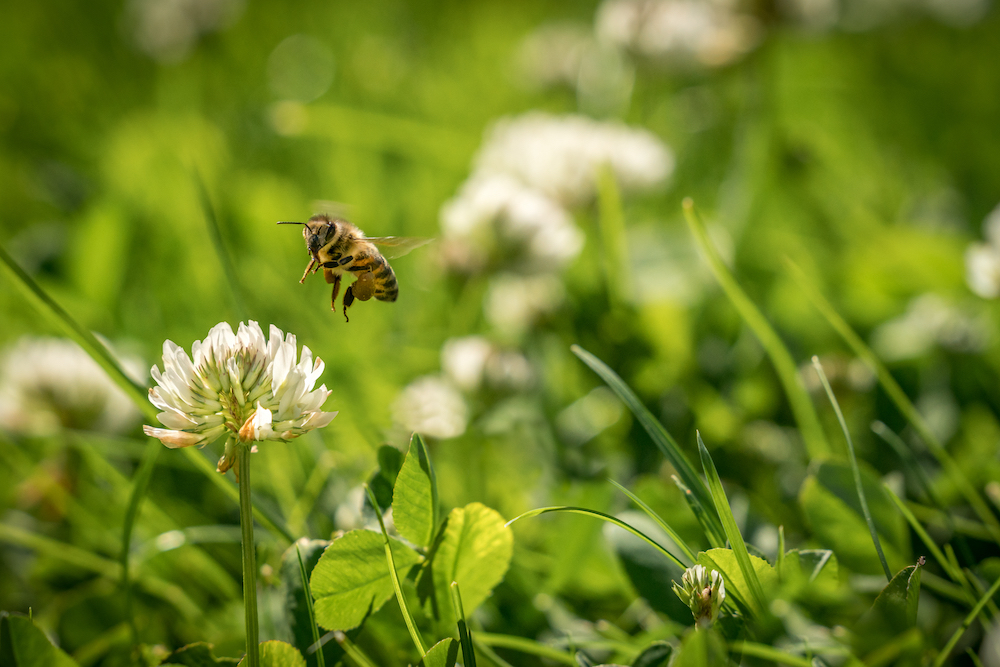How Is Honey Made?

There’s no doubt about it. Honey is delicious and can be used in so many different ways to enhance the flavor of food and beverages. It can even be enjoyed completely on its own!
Have you spent much time thinking about how honey is made? You may know that honey bees make honey, but do you know all of the amazing work that goes into producing this delicious, golden substance?
How Bees Make Honey
Nectar is the foundational ingredient of honey. Nectar is made of sugars and water, but nectar composition can vary from flower species to flower species. The sweet scent and taste of nectar is what draws pollinators to the flowers. Remember, flowers need pollinators to help them transfer their pollen to other flowers, helping them with their reproduction efforts.
The honey making process is fascinating, just like everything else that honey bees do. Bees have a structure call a proboscis that is similar to a very long tongue. A honey bee will use it to remove nectar from the flower. They store the honey in a special stomach, sometimes called a honey stomach or honey sack, that is separate from their regular stomach. Once the honey sack is full, they return to the hive for the next step in the process.
Worker bees will pass the nectar on to another group of worker bees, often called house bees. They will remove the honey from the honey sack and begin processing it through a chewing-like action. Enzymes from the house bees’ mouths will begin to break up the nectar so that it is more easily digestible later on in the process. Then, the processed nectar is given time to sit out so the water within it can begin to evaporate. Processed nectar with low water content turns into a thick substance, just like the honey we see in our kitchens.
And by the way, bees aren’t called busy for nothing! In fact, evaporation is helped along by worker bees who use their wings to increase air flow and speed up evaporation. Not only does this help in the honey making process, but it also helps to maintain the proper temperature within the hive.
The water content of honey is a vital piece of the honey making process. Honey that contains too much water will not have the right consistency and could spoil. The optimal water percentage should be below 18% for perfect honey.
The honey is stored in the individual cells of the honeycomb until it is ready to be put to use. A large colony can eat up to 200 pounds of honey in a year. So it makes sense that they need to work diligently to create stores of the sweet stuff during the busy season.
Bees will rely on these stores of honey during the winter when they are unable to forage for nectar and pollen. When temperatures drop, bees will have the energy to stay warm because they have worked hard all spring, summer and fall to store up for the colder winter months. With this energy, they are able to cluster together and use their bodies and the motion of their wings to generate warmth.
Honey bees work together in the most amazing way to support the colony. Every worker bee has a role and contributes to support the rest of the hive. It is no different with the honey making process. Nectar is transferred from bee to bee and processed until it is in exactly the right consistency and composition. It is stored in intricate, hexagonal cells so that it is ready and available for them when they need it during the winter time.
Humane Live Bee Removal Services San Diego
At D-Tek Live Bee Removal, we care about protecting honey bees and using safe and humane techniques during our removal processes. If you live in the San Diego area and have a bee hive or swarm on your property, don’t try to take care of the situation on your own or hire a run-of-the-mill exterminator.
Instead, look for a live bee removal service who will take extra care to remove the bees with their safety, and your family’s safety, in mind. Call D-Tek Live Bee Removal for your free inspection and quote. We look forward to serving you!
